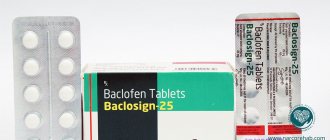Normal bowel movements are an indicator of health. Experts call stool retention for two or more days constipation or constipation. Frequent stressful situations, insufficient fluid intake, a sedentary lifestyle, taking certain medications - all this and much more can trigger the development of a pathological process.
In children, the causes may be related to intestinal immaturity, as well as the introduction of new foods to the diet. And sometimes the whole reason lies in nervous disorders from shocks, for example, separation from the mother. In a healthy person, the frequency of bowel movements depends on nutrition, lifestyle and existing habits.
Those who suffer from constipation often complain of a constant feeling of nausea, fatigue, bad taste in the mouth, decreased appetite, and bloating. Stool retention threatens the development of vitamin deficiency and anemia. This is due to poor absorption of nutrients due to constant use of laxatives.
Normal digestion is the result of a healthy diet, adequate fluid intake and a healthy lifestyle. But when constipation has already occurred, first the intestines should be helped to empty, and only then proceed to preventive measures.
Glycerin suppositories for constipation act quickly and effectively; they are approved for use at any age, from infants to the elderly. Despite the fact that suppositories do help with constipation, using them as self-medication is unacceptable.
Prescription of drugs is carried out by a qualified doctor. Before use, it is important to read the instructions and follow their instructions. So, how do glycerin suppositories work? Can they be used by pregnant women? These and many other questions will be answered in this article.
Pharmacodynamics and pharmacokinetics
Glycerol ( glycerol ) is an osmotically active substance that increases excessive hydrostatic pressure. In medical practice, such properties of this compound are used to facilitate the transition of fluid from the extravascular bed to the blood serum.
When used parenterally and orally at a dosage of 1-2 grams per kilogram of body weight, glycerol, due to its dehydrating effect (increasing plasma osmolarity), helps reduce intracranial and intraocular pressure. In these cases, how quickly glycerin acts and how long it takes to act in adult patients depends on the direction of its use.
Maximum effectiveness when using the drug to reduce intracranial pressure is observed within 1-1.5 hours after its use. The onset of action to reduce intraocular pressure is observed after 10 minutes, maximum effectiveness develops after 1-1.5 hours, duration of action is about 5 hours.
Glycerol is used for dehydration therapy, indicated for cerebral edema , which occurred due to various reasons (including cases of acute poisoning), on the eve of or after ophthalmic surgery (to reduce intraocular pressure), as well as to relieve negative symptoms of an acute attack of glaucoma .
As an external remedy, Glycerin is useful for its dermatoprotective and softening qualities, as well as pronounced lubricating and hygroscopic properties. When applied to the skin, metabolic processes are activated in it, and a protective film is formed on its surface.
In pharmaceutical practice, glycerol is often used to make an emollient ointment or cream for hands and/or feet. Quite popular in cosmetology are an anti-wrinkle face mask and a hair mask, as well as glycerin soap and glycerin oil with the addition of vitamins and other useful ingredients. However, you should avoid frequent use of glycerin oil and glycerin soap, the benefits and harms of which, especially for people with oily skin, may not be as expected (excessive skin whitening and acne ).
Glycerin rectal suppositories are a laxative remedy designed to soften previously hardened fecal matter, which leads to easier passage through the lumen of the colon. Also, this local drug is characterized by an irritant effect on the intestinal mucosa and reflex stimulation of the motility of the lower gastrointestinal tract.
When used rectally, glycerol undergoes fairly rapid resorption in the intestinal mucous membranes. How long it takes for glycerin suppositories to take effect depends on the individual characteristics of the human body; on average, the laxative effect develops within 15-30 minutes. The main biotransformation of the active ingredient occurs in the liver. Excretion is carried out by the kidneys (7-14% of glycerol is excreted in unchanged form).
Indications for use
As a therapeutic agent, the drug is indicated for use in cases of difficult bowel movements or its complete absence, in other words, these suppositories are prescribed to patients suffering from constipation of various origins (functional, age-related, psychogenic, etc.), including similar negative phenomena in nursing mothers and pregnant women .
As a prophylactic agent, the drug is used to prevent constipation in patients for whom physical stress is contraindicated, including that which occurs during the act of defecation: anorectal abscess , thrombosed painful hemorrhoids , anorectal stenosis , a history of anal fissures myocardial infarction and other similar painful condition.
Contraindications
The use of Glycerin suppositories is prohibited when:
- pain in the abdomen of an uncertain nature;
- individual hypersensitivity;
- tumor formations of the rectum;
- renal failure;
- inflammatory pathologies of the rectum ( proctitis , paraproctitis );
- appendicitis;
- intestinal bleeding ;
- presence of anal fissures ;
- manifestations of diarrhea ;
- exacerbation of hemorrhoids .
Contraindications and side effects
There are restrictions in connection with the use of suppositories, these include:
- proctitis – inflammation of the rectum;
- neoplasms in the intestines;
- anal fissures;
- hypersensitivity to glycerol;
- acute hemorrhoids.
Important! You should not use the medicine before taking a stool test, as it may affect the results.
No side effects were observed with single use. Long-term and regular use is associated with the risk of the following unpleasant symptoms: irritation, burning sensation, and the intestines refuse to work on their own.
Glycerin acts as a lubricant for the inner surface of the intestines, allowing stool to pass out easily and painlessly
Glycerin suppositories, instructions for use
Suppositories with glycerin are intended exclusively for rectal administration, which is best administered 15-20 minutes after a meal (usually breakfast).
Instructions for the use of glycerin suppositories for children over 7 years of age and adult patients involve the use of a dosage of 2.11 grams (1 adult suppository), administered once every 24 hours.
Instructions for use for newborns recommend using children's glycerin suppositories in a dose of 1.24 grams, with a single daily administration of ½ suppository for children under 3 years of age and a whole suppository for children 3-7 years of age.
Instructions for use during pregnancy correspond to the recommendations given for adult patients. Suppositories can be administered to pregnant women only after a comprehensive examination by a gynecologist and with his consent.
How long it takes for a glycerin suppository to take effect in an adult and a child depends on the dose and the individual response of the patient’s body to the effects of glycerol. As a rule, no more than 30 minutes pass from the moment the suppository is introduced until the act of defecation.
If absolutely necessary, adult and pediatric doses can be doubled.
Method of using rectal suppositories
- Before using glycerin suppositories, you must thoroughly wash your hands with soap, after which, in order to cool, it is advisable to hold them for some time under cold water. Since the base of rectal suppositories quickly melts upon contact with warm hands, in addition to cooling the hands, it is also recommended to cool the suppository itself by placing it in the refrigerator for a few minutes before using it or also holding it under cold water (do not remove the primary wrapper from the suppository follows), which will make it more durable.
- After the procedures described above, you must carefully remove the primary packaging from the candle, using a sharp object (knife, scissors) if necessary.
- If it is necessary to use ½ candle, cut it lengthwise into two equal parts using a disposable razor blade.
- The suppository removed from the wrapper should be taken with clean fingers or hands wearing disposable gloves.
- Lubricate the tip of the candle with a water-soluble lubricant (without Vaseline ) or moisten the anus with cool water.
- Take a lying position on your side with your lower leg fully straightened and your upper leg bent towards your stomach.
- Lift your upper buttock with your free hand, thereby opening the rectal area.
- Insert the suppository into the anus and insert it into the rectum using your fingertips beyond the muscular sphincter to a distance of approximately 2.5-5 cm in adults and 2.5 cm in infants.
- Bring your buttocks together and hold them in this state for several seconds.
- Remain in a side-lying position for 5 minutes, which will prevent the suppository from coming out.
- Throw away the used packaging and wash your hands thoroughly.
special instructions
You should not resort to systematic use of this remedy. The use of suppositories should be discontinued immediately after restoration of typical physiological intestinal motility.
Do not lubricate candles or the anus with solid or liquid mineral oils .
Glycerin suppositories for hemorrhoids are indicated in case of complications of this disease with constipation , lasting for 2-3 days. The use of suppositories is contraindicated for hemorrhoids in the acute period ( bleeding , bowel prolapse , etc.).
After childbirth, glycerin suppositories can be used if there is no stool for 2-3 days. These recommendations are appropriate especially after childbirth with stitches, when hard stools or physical stress during defecation can damage their integrity. Suppositories can be used only after consultation with a gynecologist and in the absence of mechanical damage to the anus.
How to use?
Suppositories should be stored in the refrigerator. Take them out a few minutes before using to allow them to come to room temperature. The instructions say that you should light a candle after breakfast, although if necessary, this can be done at any time of the day. The main thing is that you have the opportunity to go to the toilet later. The effect usually occurs within ten to twenty minutes.
Important! Don't forget that if you go to the toilet right away, only a candle will come out. Try to hold the suppository for as long as possible so that it better softens the stool.
The urge to defecate may also occur over the next few hours. For prolonged constipation, the use of two suppositories may be necessary. Also, the dosage may increase if the candle is used by a person with large weight. For newborns, the suppository is divided into two or even four parts.
You can use glycerin suppositories for constipation only once a day
Analogs
Level 4 ATX code matches:
Norgalax
Glycerol
Microlax
- Dexeryl
- Norgalax
- Glycelax
- Normacol
- Enema
- Ready-Tu-Uz
- RectActive
Glycerin suppositories for newborns
The instructions for glycerin suppositories for newborns suggest their use from the first days of a child’s life. Glycerin suppositories for infants are usually indicated in a daily dosage equal to ½ suppository weighing 1.24 g, administered once every 24 hours (whether whole baby suppositories can be administered to newborns is decided by the pediatrician, based on the observed situation).
To properly administer the drug to newborns, you should first place the child on his back, bending his legs close to his tummy, and carefully, slowly insert a glycerin suppository (with the rounded end forward) as deep as possible behind the muscle sphincter. You can also lay the baby on his left side and bend his legs at the knees towards the tummy.
After this, you need to close the baby’s buttocks and hold them in this state for some time (about 2 minutes). This manipulation is carried out in order to prevent the suppository from slipping out and its immediate effect.
Reviews from pediatricians say that when the administration procedure is performed correctly, the laxative effect in infants occurs within 5-10 minutes.
Constipation in a child
Stool retention in childhood can be associated with a large number of reasons: lack of body weight, insufficient physical activity, lack of fiber in food, lactose deficiency, rickets. Glycerin suppositories have a simple composition.
Apart from glycerin and acids, there are no other components in suppositories. Glycerol, in combination with other acids, has antiseptic, anti-inflammatory, antimicrobial and analgesic effects.
Glycerin suppositories are used for constipation in children, as they are a hypoallergenic remedy.
Long-term use of suppositories can cause irritation and inflammation of the rectum. Also, long-term use can be addictive, and then it will be difficult for the child to go to the toilet on his own without the use of suppositories.
Important! Glycerin suppositories can be used even by newborns, since they are not absorbed by the intestinal walls and do not enter the systemic bloodstream.
Introducing suppositories to newborns is a rather labor-intensive process. Children are mobile and may interfere with the administration of the suppository. Be sure to wash your hands before the procedure.
Bifidumbacterin for constipation in children
The child should be placed on his back with his legs tucked toward his stomach. Then, in a smooth motion, inject the product with the rounded end forward.
Then hold the legs in such a position so that the candle passes deeper through the rectum and dissolves well. If it is not possible to insert the suppository in the supine position, place the child on his side, bend his knees and press him to his stomach. Baby suppositories usually begin to work within twenty minutes.
Glycerin suppositories during pregnancy and lactation
The official instructions do not describe any restrictions on the use of the drug for constipation during breastfeeding and pregnancy , which, in principle, is confirmed by numerous reviews of women using this remedy during these periods.
However, some gynecologists do not recommend the use of glycerin suppositories during early pregnancy, since at this time the uterus is quite close to the rectum and the relaxing effect of the drug can also affect its tone. During late pregnancy, the above-described contraindications and the threat of miscarriage .
What causes the laxative effect of glycerin suppositories?
Glycerin has the ability to irritate the mucous membrane in the rectum and thereby reflexively stimulate peristalsis and trigger the act of defecation2. Thus, glycerin suppositories are classified as irritating laxatives. But with constipation, it is not always possible to achieve bowel movement with the help of reflex stimulation due to hardening of the stool. It is worth noting that in this situation they not only turn out to be powerless, but can also cause harm because passing dense feces can injure the anus. Because of this, Vaseline is added to some suppositories, but it cannot fully soften dense feces.
Microlax® microclysters have a completely different mechanism of action: the components they contain do not irritate the rectum, but soften dense feces, facilitating their elimination. The effect of a microenema usually occurs within 5-15 minutes3.
Up to contents
Reviews of Glycerin suppositories
The vast majority of reviews about this remedy for constipation, including reviews of glycerin suppositories for newborns, children and adult patients, are positive. A significant portion of people using this drug have experienced its rapid and relatively long-lasting effect in the absence of significant side effects and are completely satisfied with the results obtained.
Reviews of glycerin suppositories during pregnancy are not inferior in their positive assessment to the prevailing opinion and also position this drug as quite effective and inexpensive.
However, it should be remembered that the use of glycerin suppositories only facilitates the act of defecation and in no way affects the cause of constipation, which simply needs to be correctly diagnosed and effectively treated.
Should glycerin suppositories be used for children and newborns?
When using glycerin suppositories in children, you must remember the following: due to the irritating effect of glycerin on the rectal mucosa, with frequent use of glycerin suppositories, a child may experience irritation of the rectum, and in some cases develop catarrhal proctitis (that is, its inflammation).2 Also , frequent use of irritating laxatives in children leads to such a formidable complication as the development of addiction: the child can no longer empty his bowels on his own.2 It is then very difficult to restore the lost skill of independent defecation and this should be done by a qualified specialist. Microlax® microenemas, which do not have an irritating effect, are not addictive and can be used by children from birth.3
Considering the mechanism of action of glycerin suppositories and according to the instructions, before using them it is necessary to make sure that the patient has no contraindications: hemorrhoids in the acute phase, anal fissures, inflammatory diseases and tumors of the rectum; hypersensitivity to glycerol.2 A contraindication to the use of Microlax® microenemas is only increased individual sensitivity to the components of the drug.3
Up to contents
Price of Glycerin suppositories, where to buy
The average price of Glycerin suppositories in Russia is about 200 rubles.
In Ukraine, the price in pharmacies for Glycerin suppositories No. 10 is approximately 70 hryvnia.
- Online pharmacies in UkraineUkraine
Pharmacy24
- Farmina 1.5 g N5 suppositories glycerin suppositories Farmina Ltd., Poland
50 UAH. order








